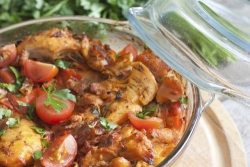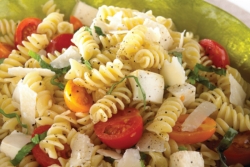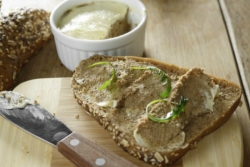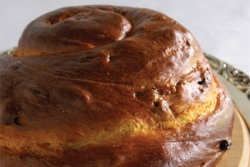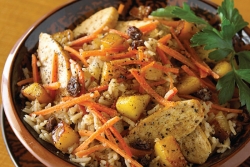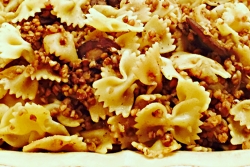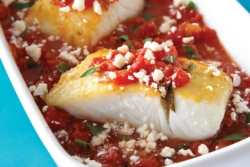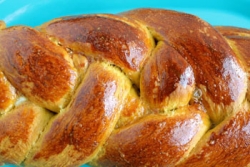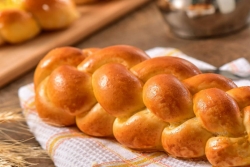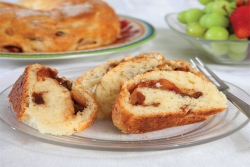Sanbat Wat (Ethiopian Shabbat Stew)
Often declared the national dish of Ethiopia, a wat is a stew, and doro wat is a spicy chicken stew eaten with one’s fingers using injera bread to scoop up the morsels of food and gravy and to temper the heat of the seasonings.
Pasta with Salsa Cruda
This pasta dish is a variation of the famous insalata Caprese made up of the season’s freshest tomatoes and basil and fresh mozzarella found on the island of Capri.
Chopped Liver
Another by-product of the Shabbat chicken - thank goodness those Eastern European Jews didn’t waste anything!
Round Challah
Normally, two loaves of elongated challah are served for Shabbat, but for the High Holidays a round challah, sometimes containing raisins, is customary.
Bukharan Shabbat Chicken Palov
Cultures might remain the same, but in this day and age countries often change borders and names. Bukhara is now Uzbekistan and Tajikistan, but its culinary heritage can best be defined as an amalgam of Turkish and Iranian food traditions. Here is a recipe for a Shabbat chicken dish from this region that I adapted for the cook who has no time to wait for chicken to boil and then be deboned!
Kasha Varnishkas
There is nothing like pot roast gravy on a pile of little brown granules mixed with golden fried onions and mushrooms to transport one back to the "good ol’ days".
Greek Psari Saganaki
Until World War II, the largest Jewish fishing fleet in the world was based in Thessaloniki. With more than 250 varieties of kosher fish swimming in the Mediterranean, Jewish cooks were only constrained by the size of the fish as to which cooking technique to employ.
Pumpkin Challah
An unconventional twist on traditional challah, this dough incorporates pumpkin pie spice and pumpkin purée.
Cinnamon Apple Stuffed Challah
For a sweet Rosh HaShanah, this variation on traditional challah adds apples to the dough just before braiding.
Czech Apple-Filled Yeast Cake (Ceske’ Buchty)
This cake combines Czech culture with Jewish tradition, placing the symbolic holiday apple inside the traditional Czech dough and making it into a ring to symbolize a year of never-ending good.
